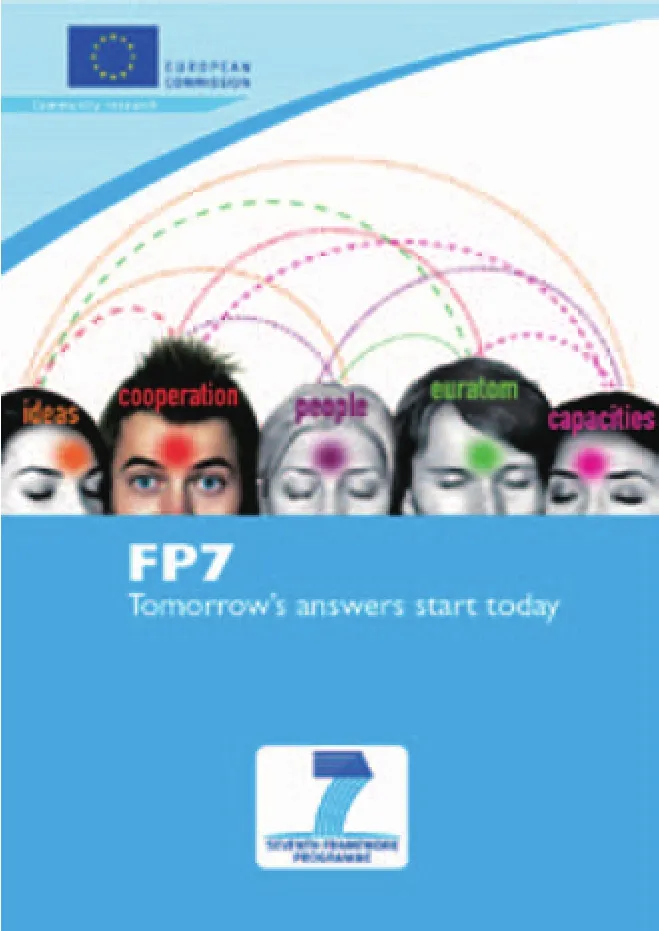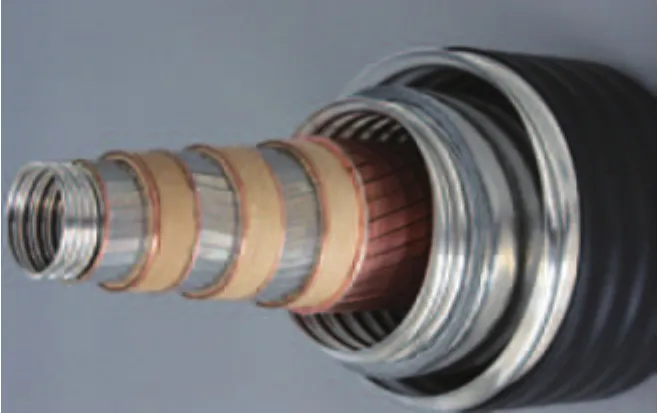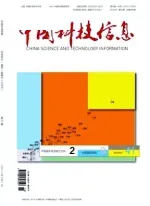国际科技信息
国际科技信息
迄今为止,欧盟输电网的建设理念仍然停留在传统的大型发电厂生产电力通过输电网向被动用户供电,但可再生能源的持续快速发展,要求欧盟输电网变得更“智能化”,从而避免输电网的不稳定甚至崩溃。智能电网通过采取便利可再生能源(如风能、光伏能发电等)接入输电网的措施,最大化利用可再生能源资源,同时对输电网进行互联改造,可以更好地优化资源配置、节
欧盟智能电网技术近期研发动向
约能源和方便电力消费用户的双向联网(出售自己多余的电能)。因此,对传统输电网进行智能化的再改造过程,需要进行一系列复杂的适应电力供需市场的设计、组织、调整和技术工程,需要对新兴交叉技术进行大量的研发创新活动,促进输电网和配电网的更稳定、更可靠和智能化。此意味着需要对信息通讯技术(ICT)在输电网中的应用加快研发进度,例如传感器、数字仪器设备、自动控制技术和信息传输网络技术等。
欧盟第七研发框架计划(FP7)加大了对智能电网技术研发及应用项目的资助支持力度,目前的研发项目主要集中在以下三大领域:
1、电力消费用户与输电网的双向连接技术,满足电力用户对输电网电力供需双向选择的需求,加强输电网对间接电力生产的管理技术的研究,对电能储存用户进行补偿和奖励技术的开发。
2、提高输电网能效技术,可再生能源接入输电网技术,更大范围输电网联网技术(成员国电网之间电价有差别),输电网优先可再生能源跨境交换技术等。
3、ICT输电网应用技术,新型电能储存技术,清洁煤炭技术和碳捕获及储存技术,城市、建筑、交通智能技术,电动汽车充电设施和燃料电池技术等。
Seventh Framework Programme (2007 to 2013)
Research is a component of a knowledge triangle (the other two being education and innovation) meant to boost growth and employment in the European Union (EU) in the context of a global economy. The 7th Framework Programme for Research, covering the period 2007 to 2013, is an opportunity for the EU to match its research policy to its ambitions in terms of economic and social policy by consolidating the European Research Area (ERA). In order to achieve this objective, the Commission hopes to increase the EU's annual spending on research,thereby generating more national and private investment in this field. When it is implemented,the 7th Framework Programme will also have to respond to the research and knowledge needs of industry and more generally of EU policies. The Framework Programme is organised around four main programmes and has been greatly simplified so as to be more effective and more accessible to researchers.
The 7th Framework Programme is adapted to the EU’s needs in terms of growth and employment. Atier wide-ranging public consultation, four main objectives have been identified,which correspond to the four specific programmes around which the European research effort is to be structured.
The Cooperation Programme aims to stimulate cooperation and improve links between industry and research within a transnational framework.The aim is for Europe to gain and consolidate leadership in key research areas. The programme will have nine themes, which are to be managed autonomously but will be complementary in terms of implementation:
· health;
· food, agriculture and biotechnology;
· information and communication technologies;
· nanosciences,nanotechnologies, materials and new production technologies;
· energy;
· environment (including climate change);
· transport (including aeronautics);
· socio-economic sciences and the humanities;
· security and space.
The Ideas Programme is intended to enhance exploratory research in Europe, i.e. aimed at discovering new knowledge that fundamentally changes our vision of the world and our way of life.In order to achieve this, the new European Research Council will support the most ambitious and innovative research projects.Within this new structure, at the forefront of European research,there will be an autonomous Scientific Council, which will identify priorities and scientific strategies. The aim is to enhance European research excellence by promoting competition and risktaking.
The People Programme will harness significant financial resources that can be used to improve the career prospects of researchers in Europe and attract more high-quality young researchers. The Commission hopes to encourage training and mobility so that European researchers can realise their full potential. The programme will reinforce the existing "Marie Curie" actions, which for several years have been offering mobility and training opportunities to European researchers.
The Capacities Programme is intended to give researchers powerful tools that will enable them to enhance the quality and competitiveness of European research. This means more investment in research infrastructure in the less successful regions, in the creation of regional research-driven clusters and in research for the benefit of SMEs. This programme also has to reflect the importance of international cooperation in research and the role of science in society.
Furthermore, the 7th Framework Programme will finance the direct actions of the Joint Research Centre (JRC)and the actions covered by the Euratom Framework Programme in the fields of:
· research into fusion energy;
· nuclear fission and radiation protection.

欧盟科研人员首次发现植物的生长基因
英国和法国科研人员组成的研究团队对玉米农作物进行的一项研究首次发现,能控制农作物向玉米种子提供营养素的“生长基因”,并将该基因命名为Meg1。Meg1的发现意义重大,预示着人类可以大大提高农作物的产量,减缓地球人口不断膨胀带来的粮食安全压力。该项研究结果在最近一期的现代生物学杂志上发表。
Meg1不同于大多数由母系染色体和父系染色体的双性遗传表达基因,而仅仅来自于母系染色体。这种由单性基因表达的独特形态在分子生物学上被称作印记(Imprinting),Meg1在农作物上被首次发现,是一项重要的科技突破。其实,这种基因印记已经在人体和哺乳动物基因组中得到证实,“生长基因”通过控制胎盘的生长,调整母体向胎儿成长提供的营养量。
Meg1的发现让科研人员深受鼓舞,目前研究团队正在对小麦和水稻等主要农作物的“生长基因”进行探索测试,同时积极开展利用“生长基因”增加种子生物质含量的机理研究,进而提高主要农作物的生产率和产量。该项研究得到欧盟科技合作计划(COST)框架的部分资助,COST是欧委会促进成员国之间密切合作关系、优化资源配置和建设欧盟统一研究区域(ERA)的重要支撑计划。
Plant nourishing gene, Meg1, adds another step forward to increasing food production
Current Biology (2012,Vol.22:2, 160) published the discovery of Meg1 a new“provisioning” gene in maize plants that regulates the transfer of nutrients from the plant to the seed could lead to increase crop yields and improve food security.This is a research work led by the University of Warwick in collaboration with the University of Oxford and agricultural biotech research company Biogemma-Limagrain and funded by the European Union and BBRSC.
Under the title of“Maternal control of nutrient allocation in plant seeds by genomic imprinting”the authors showed that imprinted Maternally expressed gene1 (Meg1) in maize is both necessary and sufficient for the establishment and differentiation of the endosperm nutrient transfer cells located at the mother:seed interface.Imprinted genes are commonly expressed in mammalian placentas and in plant seed endosperms, where they regulate placental function and nutrient distribution from mother to fetus. In plantsmore than 60 imprinted genes had been recognised and Meg1 is the first one that has proven to play an equivalent role as mammalian imprinted genes in the flow of resources to the embryo. The results demonstrate that Meg1 regulates maternal nutrient uptake, sucrose portioning,seed biomass yield and, as in mammals, Meg1 is critical for maintaining a balance distribution of maternal nutrients to filial tissues.The difference between mammalian imprinting is that Meg1 is a maternally expressed gene that acts to promote rather than restrict nutrient allocation to the offspring.
Dr Gutierrez-Marcos of the University of Warwick said:
‘These findings have significant implications for global agriculture and food security, as scientists now have the molecular knowhow to manipulate this gene by traditional plant breeding or through other methods in order to improve seed traits,such as increased seed biomass yield'.
‘This understanding of how maize seeds and other cereal grains develop (e.g.in rice and wheat) is vital, as the global population relies on these staple products for sustenance. Therefore to meet the demands of the world’s growing population in years to come, scientists and breeders must work together to safeguard and increase agricultural production.’
Professor Hugh Dickinson of Oxford University’s Department of Plant Sciences,said:
‘The identification of Meg1 is a highly-important discovery and represents a vital first step in this process; the next will be to identify other genes involved in regulating provisioning and nutritional content of seeds.’

德国建世界最长高温超导输电试验线路
德国卡尔斯鲁尔技术研究院(KIT)、德国能源企业RWE公司和法国的电缆制造企业Nexans公司,正在德国西部城市埃森进行高温超导(THS)输电试验项目——“AmpaCity”。
计划在德国埃森市中心地段铺设长度为1公里的高温超导输电电路,输电电缆建设于埃森市中心两座变电站之间,这条输电电压为10千伏的中压输电电缆的输电功率为40兆瓦,要完成这样电能输送能力需要铺设5条中压铜芯电缆输电线路,或者改用高压输电线路,这在城市中心地段是非常困难的任务。所用超导电缆为同轴电缆形式,导电体为同心分布的三层超导材料,中间有绝缘介质,超导导电体内芯的中心和外层有供液氮流动的回路和夹层,与用保温材料制成的位于电缆最外层的隔热层共同作用,使电缆的超导内芯保持在-180摄氏度的状态,保证其超导特性。
电缆的直径不大于目前通用的铜芯电缆。相同直径的电缆,高温超导体电缆的电能传输能力是一般铜芯电缆的5倍以上。
这是目前世界上最长的高温超导电缆试验线路,项目于今年1月19日开始进行,为期4年,将对不同的高温超导材料和绝缘隔热材料进行试验。中期计划目标是用高温超导电缆构建一个城市的输电网,取代高压输电线路,实现提高电能输送效率、降低运行和维护成本、减少占用土地资源的目标。同时,此试验输电线路还将用于试验超导过压保护技术,这种技术在输电线路发生短路等故障时,能自主并比现有保护装置更快的启动和恢复输电线路的正常状态。
卡尔斯鲁尔技术研究院(KIT)的专家认为,高温超导体电缆的应用前景决定于不断提高高温超导体材料的性价比,改善电缆制造工艺,优化相关低温技术的成本和可靠性,不久的将来,在这些方面都将取得突破。
"AmpaCity“: Essen to become model city for new superconductor link for electricity transmission

· RWE Deutschland starts project for forward-looking electricity transmission with partners from industry and science
· Superconductor system of technology leader Nexans to replace inner-city high-voltage cable
· Karlsruhe Institute for Technology is optimising the cable design as part of the supporting research project
The city of Essen will be the pioneer for a new chapter of inner-city electricity distribution for the future: in 2013, the currently longest hightemperature superconductor cable (HTS cable) in the world will be buried underground here. The "AmpaCity" project was presented to the public today. Project partners are RWE Deutschland AG, Nexans as manufacturer of cables and cable systems, the Karlsruhe Institute for Technology (KIT) and the project sponsor Jülich (PTJ).
The "AmpaCity" project will be sponsored by the Federal Ministry of Economics and Technology ((BMWi) given its special benefits and the prospects of superconductors for electricity distribution in the future. The total costs of the research project amount to some € 13.5 million, including the financial support provided by the federal government in the amount of approx. € 6.3 million.
The conventional 110,000 volt lines between two substations in Essen's city centre will be replaced by a modern 10,000 volt superconductor cable over a length of one kilometre. Superconductors are regarded as forward-looking solution for space-saving and particularly efficient transmission of electricity in urban areas. Dr.Joachim Schneider, Executive Board member of RWE Deutschland: "Superconductors are going to play an important role for energy supply in cities.We are very proud to be among the frontrunners with this pioneering project."
The detailed planning of the project will start in the next few months. This includes determining the exact route of the cable link. This will go hand in hand with design optimisation and prototype tests on the premises of the manufacturer;Nexans intends to manufacture the compact superconductor cable system late in 2012, which will be developed specifically for the application in the city centre.From a present perspective, it is planned to commission and integrate the superconducting cable into the electricity grid of Essen by the end of November 2013.
Superconductors are based on ceramics. When cooled down to about minus 200 degrees Celsius they can transport electricity almost without any losses. As a result, their energy efficiency is superior to conventional cables. What is more, the installation of one superconductor cable section can replace up to five parallel conventional 10,000 V cables or 110,000/10,000 volt substations because superconductors can also transmit larger power volumes at small voltage. This creates space and makes sites available at expensive inner-city locations.
The superconductor cable for the field trial in the distribution grid of RWE Deutschland is produced by Nexans, one of the world's leading suppliers of cables and cable systems. The Karlsruhe Institute for Technology(KIT) will support the project scientifically by optimising suitable superconducting and insulating materials. According to experts, the large-scale use of superconductors will be economically viable in just a few years. A study of the project partners determined the benefits which are now to be confirmed in the field at Essen.

澳研制出完美的单原子晶体管
澳大利亚科学家表示,他们研制出一种单原子晶体管,其由蚀刻在硅晶体内的单个磷原子组成,拥有控制电流的门电路和原子层级的金属接触,有望成为下一代量子计算机的基础元件。研究发表在2月19日出版的《自然·纳米技术》杂志上。
在最新研究中,科学家们利用放置在真空环境中的硅薄片制造出该单原子晶体管。为了观察并操纵位于硅薄片表面的原子,他们首先用一层不起反应的氢原子将该晶体管覆盖,随后利用扫描隧道显微镜超精细的金属尖端,精确地将某些区域的氢原子有选择性地移走,露出两对相互垂直的硅带外加一个由6个硅原子组成的小长方形,其位于这些硅带的结合点处。
接着,科学家们添加了磷化氢(PH3)气体并加热,导致磷原子依附到硅暴露的地方,因为是长方形,所以只有一个磷原子进入该硅网络内,结果得到4个相互垂直的磷电极和一个磷原子。其中一对电极之间的距离为108纳米,在它们之间施加电压后,电流能通过单个磷原子并在另外两个垂直的、距离仅为20纳米的电极之间流动。这样,磷原子就像晶体管一样起作用了。
科学家们表示,这并非首个单原子晶体管,但新晶体管能被更加精确地放置,这就使得其更有用。
研究领导者、新南威尔士大学量子计算和通讯中心的主任米歇尔·西蒙斯表示:“我们最新研制出的设备是完美无缺的,这是科学家首次证明能在一个基座上非常精确地操控单个原子。”
虽然该晶体管在低于1开氏度(零下272.15摄氏度)的环境下才能工作,但最新技术进步有望让晶体管更快达到单原子级;科学家们也可据此洞悉,一旦设备达到原子级,它们会如何工作。科学家们预测,晶体管将于2020年达到单原子级以同摩尔定律保持一致。

Transistor Single Atom In Size Created By Australian Scientists
Just when you thought electronic devices couldn't get any smaller comes word that Australian scientists have fabricated a transistor out of a single atom.
Transistors--semiconductor devices that amplify and switch electronic signals--are considered the building blocks of computers.
The researchers created the minute device--a phosphorous atom precisely positioned on a silicon crystal--using a scanning tunneling microscope inside a vacuum chamber.
The transistor is not a commercially available product but is believed to represent an important step toward the development of next-generation "quantum"computers of unprecedented processing capabilities.
"This is the first time anyone has shown control of a single atom in a substrate with this level of precise accuracy,"Dr. Michelle Simmons,director of the ARC Centre for Quantum Computation and Communication at the University of New South Wales and one of the researchers behind the breakthrough, said in a writien statement.
Andreas Henirich, a physicist at I.B.M., told the New York Times that the researchers' approach was"extremely powerful. This is at least a 10-year effort to make very tiny electrical wires and combine them with the placement of a phosphorus atom exactly where they want them."
Dr. Simmons said in a video interview that the project to build a single-atom transistor had been launched a decade ago. "So here we are in 2012, and we've made a singleatom transistor roughly eight to 10 years ahead of where the industry is going to be."
美国科学家发现两种新血型 对防治癌症意义重大
美国科学家近日发现了两种全新的血型,由此人类血型的总数增至32种。
发现这两种全新血型的是以佛蒙特大学生物学家布莱恩·巴利夫为首的研究团队,2月份的《自然遗传学》杂志刊登了他们的研究成果。巴利夫和同事们在实验中发现了两种名为ABCB6和ABCG2的特殊转运蛋白,随后经法国国家输血研究所确认,这确实是两种此前未被识别的转运蛋白,含有这两种蛋白的新血型则分别被命名为“朗格雷”(Langereis)和“尤尼奥尔”(Junior)。
常见人类血型有A、B、AB和O型四种,其他稀有血型此前共有26种。这些稀有血型往往以存在某种特殊抗原物质为典型特征,并以发现者的名字命名。人类上一次发现新血型是几十年前的事情了,所以此次的发现可谓一次历史性突破。
血液一直以来都是医学界研究的重点,血型的匹配度对输血、器官移植、甚至是女性怀孕都有重要的影响。此外,此次发现的两种转运蛋白均与肿瘤耐药性有关,对癌症防治的研究同样具有极大价值。
巴利夫教授接受采访时表示,“朗格雷”和“尤尼奥尔”两种血型在东亚地区——特别是日本——最为常见,“我们的研究发现,日本有超过5万人的血型为‘尤尼奥尔’阴性。”

Two New Blood Types Identified
You probably know your blood type: A, B, AB or O. You can even see if you are Rh positive or negative. But what about the blood Langereis? Blood type or junior? Positive or negative? Most people have never heard of them.
However, this knowledge could be “a matier of life or death,”says the University of Vermont biologist Bryan Ballif.
While the problems of blood transfusion because of Langereis and the nature of the blood are rare in the world junior, some ethnic groups are at risk scores Ballif. “More than 50,000 Japanese are considered negative and Junior, problems of blood transfusion or maternal-fetal incompatibility,” he wrote.
The molecular basis of these two blood remained a mystery –until now.
In the February issue of Nature Genetics, Ballif and colleagues report their discovery of two proteins on red blood cells responsible for these lesserknown types of blood.
Ballif identified two molecules like proteins called ABCB6 specialized transportation and ABCG2.
The two newly identified proteins are also associated with resistance to anticancer drugs,the results may have implications for improved treatment of breast cancer and others.
As part of international efforts, Ballif, Assistant Professor,Department of Biology, uses a mass spectrometer at UVM funded by the Vermont Genetics Network. With this machine, he purified proteins analyzed by his former employee, Lionel Arnaud at the French National Blood Transfusion Institute in Paris,France.
Ballif and Arnaud in turn is based on antibodies and antigens in the blood Junior Langereis developed by Yoshihiko Tani at the Japanese Red Cross Osaka Blood Center and Toru Miyazaki Japanese Red Cross Hokkaido Blood Center.
Atier identifying proteins in Vermont working again France.Arnaud and his team, cellular and genetic tests confirming that these proteins were responsible for blood groups and Langereis Junior. “He was able to test the gene sequence,” Ballif said, “and,of course, we mutations in this gene in particular for all people in our sample these problems.”
Transfusion problems
In addition to the ABO blood group and Rhesus (Rh), the International Society of Blood Transfusion recognizes seven forty blood groups with additional names like Duffy, Kidd, Lutheran and Diego. But Langereis and Junior were not on that list.Although the antigens for the Junior and Langereis (or LAN)blood were identified decades ago, pregnant women with babies who have trouble with incompatible blood types, the genetic basis of these antigens was unknown until now.
The results of this review,the health care professionals will be able to quickly and confidently to screen for new blood proteins,Ballif wrote an article in the latest news. “This leaves them better prepared to be ready for blood transfusions or other tissue donations are needed,” he notes.
A better match
This knowledge may be particularly important for transplant patients. “If we get betier and betier with the clerk,we have everything we can to make a good match to do,” Ballif said. But sometimes, tissue or organ transplantation, which seemed like a good game, not work – and the donated tissue is rejected, that can cause many problems, even death.
Rejection of tissue or blood donated is caused by the way the immune system distinguish self from nonself.
Other proteins
Ballif and his international colleagues do not do their research. “We follow the blood groups are more unknown,” he says “There are probably about 10 to 15 more of these systems unknown blood type -. What we know there is a problem, but we do not know that the protein causing the problem.”Although these other blood systems are very rare, “if you that person, and you need a transfusion,” Ballif said: “There is nothing more important for you to know.”

